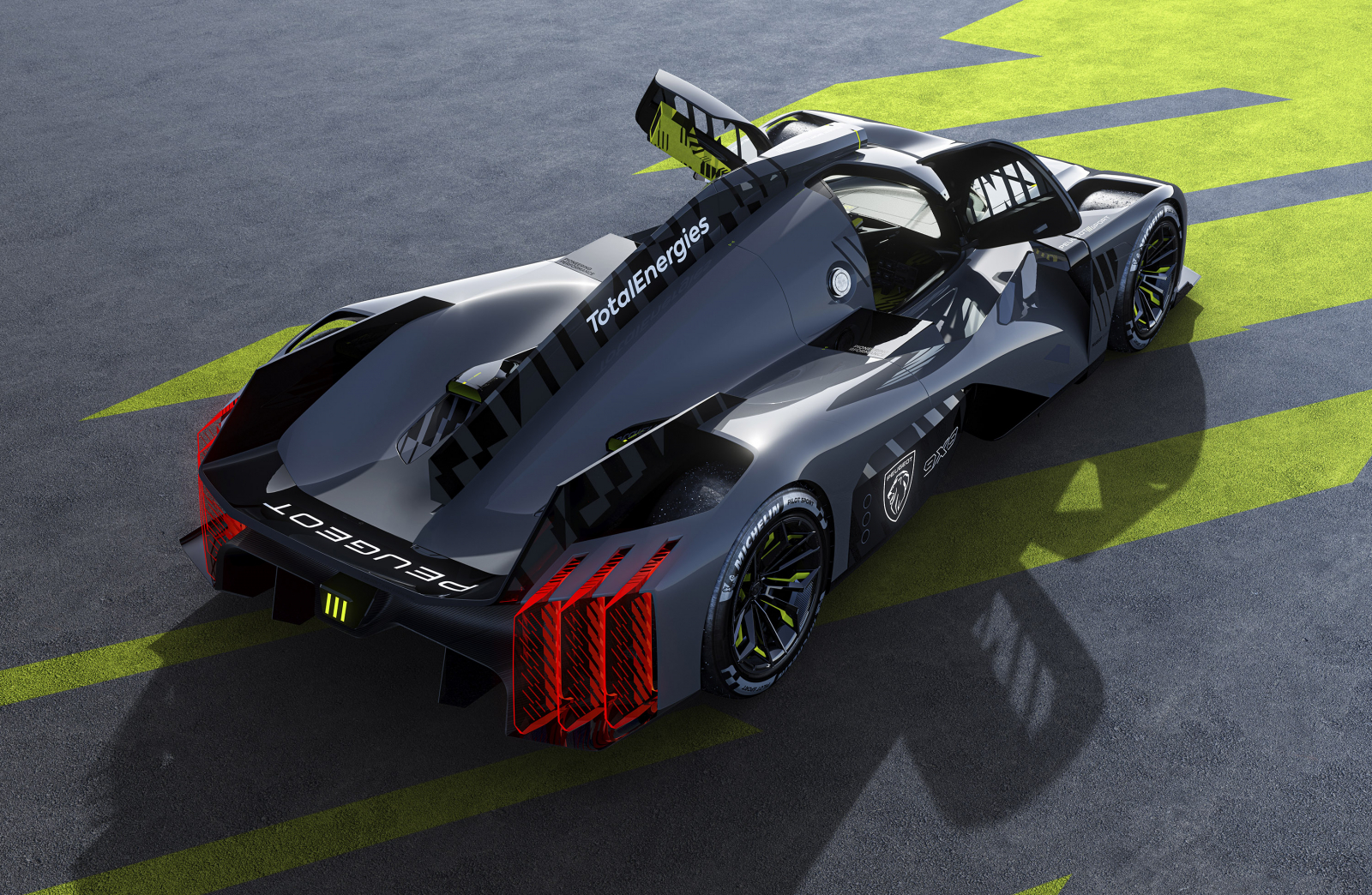Yesterday, Peugeot took the wraps off its 9X8 Hypercar that is due to compete in the FIA WEC in 2022. Let’s take a look at some of the technical and technological solutions that the French manufacturer has adopted for its prototype.
An unprecedented design
A big cat ready to pounce was how Peugeot’s designers depicted the 9X8 Hypercar. This stance is portrayed by a slightly forward-tilting cockpit. “The overall lines of the Peugeot 9X8 express the brand’s styling cues,” Peugeot Design Director Matthias Hossann explains, “while its sleek, racy, elegant forms inspire emotion and dynamism.” The result both surprises and delights Kevin Magnussen, one of the drivers enlisted in the programme: “It is the first racing car to feature styling to this extent,” he enthuses. Gustavo Menezes agrees: “Peugeot is opening up a new chapter in motorsport with the 9X8. We will have a part to play in writing the story!”
The Hypercar features Peugeot signature lighting – reminiscent of three claw strokes – front and rear while a backlit version of the brand’s new lion head logo is visible at the front and on the sides of the car.
The astounding cockpit reveals the great attention to detail afforded by the design team. “We wanted to take a special approach to the cockpit which, until now, has tended to be a purely functional and indistinctive aspect of racing cars, with no brand identity whatsoever,” Hossann points out. “The combination of our colour scheme and Peugeot’s i-Cockpit interior styling signature has provided the 9X8’s cockpit with a distinctive feel and make it immediately identifiable as a PEUGEOT in on-board camera shots.”
The sculpted wheels complement the Hypercar’s streamlined flanks superbly. The wing vents offer a glimpse of the top of the tyres while the perfectly integrated mirrors contribute to a smooth, unimpeded airflow.
Where’s the wing?
This is probably the question that crossed most observers’ minds when pictures of the 9X8 were revealed. Indeed, the 9X8 Hypercar doesn’t have one but it does boast finely-chiselled components featuring a wide diffuser above which the cheeky message “We didn’t want a rear wing” can be read.
Peugeot is the first manufacturer to call the rear wing into question in more than half a century since they emerged at the 24 Hours of Le Mans on the Chaparral 2F in 1967. “The new Le Mans Hypercar (LMH) regulations were drawn up to level out the importance of conventional performance-boosting systems,” Olivier Jansonnie, Peugeot Sport’s WEC Programme Technical Director, explains. “Designing the 9X8 has been a passionate experience because we had the freedom to invent, innovate and explore off-the-wall ways to optimise the car’s performance, and more especially its aerodynamics. The regulations stipulate that only one adjustable aerodynamic device is permitted, without specifying the rear wing. Our calculation work and simulations revealed that high performance was effectively possible without one.”
“The absence of a rear wing on the Peugeot 9X8 is a major innovative step,” says Stellantis Motorsport Director Jean-Marc Finot. “We have achieved a degree of aerodynamic efficiency that allows us to do away with this feature. Don’t ask how, though! We have every intention of keeping that a secret as long as we possibly can!”
Reliability and perfect energy control
The 9X8 is driven by a Peugeot HYBRID4 500KW powertrain including a 2.6-litre, bi-turbo, 500 kW (680 hp), 90-degree V6 engine which has been clocking up the miles on the test bench since April.
The front-mounted 200 kW motor-generator unit, seven-speed sequential gearbox and battery are currently being assembled in line with the bench-testing validation schedule. Peugeot Sport and TotalEnergies subsidiary Saft are working hand-in-hand to meet the technological challenge of jointly developing a 900 V high-power, high-density battery.
“Our target with regard to our energy requirements is flawless reliability and perfect control,” Finot explains. “Le Mans has become a 24-hour sprint race that can be won or lost by the number of times you pit. The exceptional energy efficiency of the new Hypercars prefigures what we will see shortly in the world of road cars. This consideration had a fundamental influence on our work on the Peugeot 9X8 package, every aspect of which needs to contribute to achieving hyper efficiency, from its powertrain to its aerodynamics.”
The 24 Hours of Le Mans, a laboratory for Peugeot
Through its endurance programme, Peugeot expects to put the Hypercar’s aerodynamic, mechanical and electronic efficiency through the supreme test in the gruelling event that is the 24 Hours of Le Mans. The 5,400 kilometres that the finishing cars complete in a single race at Le Mans is roughly the distance covered by a Formula One car over an entire season.
“There’s more to Peugeot’s involvement in endurance racing than the sporting aspect,” insists Peugeot CEO Linda Jackson. “Endurance racing is a form of motorsport that provides us with an extreme laboratory, which explains why our association with Le Mans is so strong. More significant perhaps than the results we obtain on the racetrack are the opportunities it provides to prove our technology and the fruit of our research work in a race that throws extreme conditions at you for 24 hours. Le Mans gives us a competitive environment to validate the hybrid systems and technologies we are currently developing to reduce the fuel consumption – and therefore CO2 emissions – of our road cars. The teams at Peugeot Sport are proud when they see their research carried over to our production models. For our customers, Le Mans is a laboratory that testifies to the quality of our cars.”




